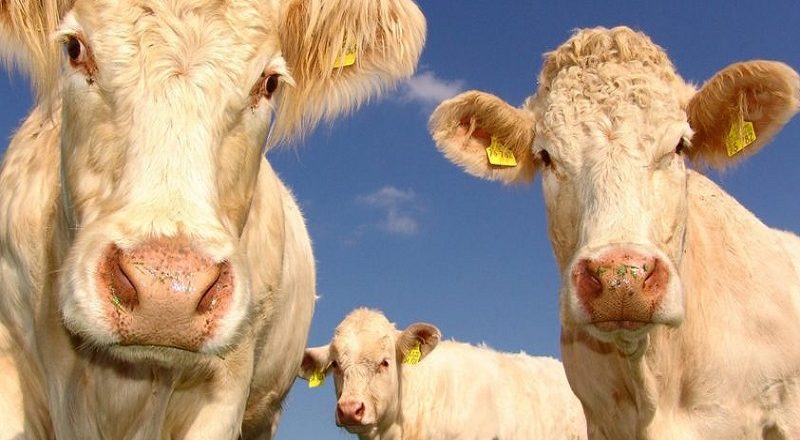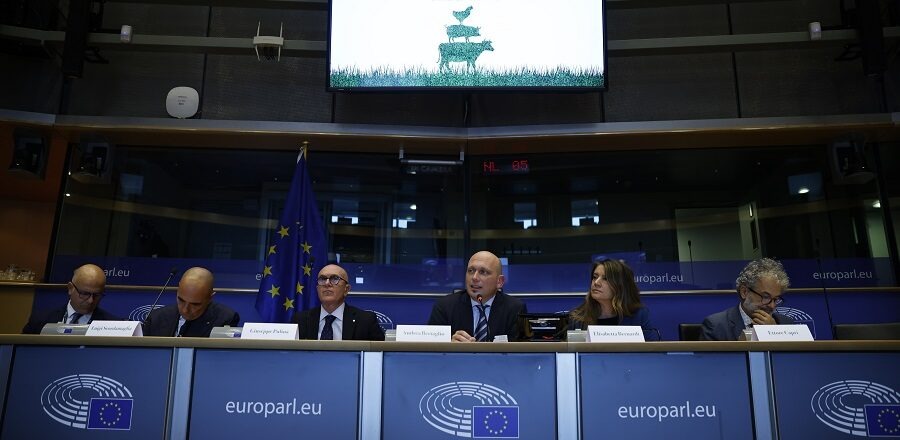
Livestock and climate change: achievements and future goals
The point on climate change issues related to the agricultural sector in the Senate hearing of the Standing Committee on Agriculture and Agri-Food Production on “Livestock and Animal Products”.
Much has been done in recent decades to reduce the ecological footprint of Italian animal husbandry. However, there are still improvement objectives related to innovation, research, and technology transfer for this vital supply chain. It is the synthesis of what emerged in the intervention of the Advisory Committee of the Academy of Georgofili during the recent Senate hearing “Farms and climate change”, requested by the Standing Committee on Agriculture and Agri-Food Production of the Italian Senate.
Agro-livestock activities should not be demonized because they play an essential role in the ecosystem and contribute to its strategic position.
#AgroZootechnical activities should not be demonized: they have an important role for the #ecosystem and contribute to a Country's #StrategicRole. Click To TweetThe supply chains of Italian animal production represent about half of the value of the national agri-food industry. This sector contributes to the Made in Italy export, give employment to about 150 thousand people, presiding over 40% of the national rural territory, fight depopulation and degradation of “inland areas” and are custodians of cultural and gastronomic traditions that it would be harmful to lose.
Animal husbandry and climate change
Livestock farms and livestock supply chains impact the environment, especially for the emission of climate-changing gases and the consumption of water resources. However, their contribution to greenhouse gas emissions is low (accounting for 5.2% of the national total) and constant. The primary emissions are due to the CO2 of the production cycle, the methane emitted mainly by the digestive fermentation of ruminants and nitrous oxide, deriving both from the management of bedding and slurry and from nitrogen fertilizers used for cultivation of fodder and feed.
The contribution of #livestock to #GHGs #emissions is limited: in #Italy, it represents 5.2% of the national total, constantly decreasing. Click To TweetThe most significant impact of enteric methane is a reversible problem, considering that its average duration in the atmosphere is about ten years. The CO2 in which it is converted is from a renewable source to a zero photosynthetic balance, such as that exhaled by humans and animals.
Some data showing that flawed calculations are harmful: in 2018, the livestock sector issued 65% of the total emissions of agriculture, equal to 5.2% of the national total (Ispra 2020), but compared to 1970, Italian farms have reduced methane emissions by 40%, that is the main greenhouse gas of animal husbandry.
Another important aspect is the methane’s biogenic origin emitted by ruminal fermentation (50% of livestock emissions). It derives from that fixed by plants with photosynthesis and ingested by animals with fodder and stays in the atmosphere for about 11.5 years, to be then reabsorbed by plants in a biological cycle. So it doesn’t accumulate in the atmosphere for hundreds of years, causing global warming.
Nitrogen emissions related to livestock farming have not been left in the background: the correct management of manure (which increases soil fertility) significantly reduces impact sources.
15k liters of #water for one kg of #RedMeat? The real #WaterFootprint data for #meat is 500/1000 liters, in line with the production of other agricultural products. Click To TweetAccording to ISPRA, the reduction in ammonia emissions from livestock farms in the period 1990-2018 was 23.4%, so even if livestock supply chains are the main culprits for this type of emissions, the trend is improving.
Livestock production is accused of being the primary water consumer: super mentioned the 1000 liters of water to produce a liter of milk and 15 thousand liters per kg of beef. Attention, the figures are not accurate because more than 90% of this water is rainwater. Let’s consider the recycling water and the rainwater collected. The actual water footprint data are 100-300 liters for milk and 500 – 1000 liters for meat, which is in line with other agricultural products’ production.
Actions that have implemented the sustainability of Italian livestock systems
Over the last few decades, the national livestock supply chains have focused on genetic selection programs, which have increased every animal’s production. Leading to savings in food, land, and water resources and reducing maintenance requirements: high individual production reduces pollution (nitrogen, phosphorus, CO2eq) per liter of milk/kg meat produced to low production.
Much attention has been paid to the protection of animal welfare to reduce the use of antibiotics. On the other hand, probiotics, prebiotics, symbiotics, essential oils, and organic acids have been introduced to strengthen the immune defenses.
The ratio has been to improve breeding facilities to reduce the incidence of the most common pathologies. Firstly, the reduction of overcrowding and the search for spaces adapted to the ethological needs of animals, the adoption of active systems for monitoring hygiene, brightness, temperatures, and air changes in stables, and the increased availability of drinking and feeding points, which allow an apparent reduction in pathologies, an increase in productivity and a reduction in animal stress.
Much attention has been paid to the #AnimalWelfare, in #Italian farms, to reduce #antibiotics. Click To TweetFurther innovations have taken place in nutrition, thanks to the study of nutritional needs of animals and natural additives that have improved animal health and performance by reducing the excretion of potential pollutants in the environment.
Increasing attention has also been paid to the recycling of food not fit for human consumption. Worldwide, 86% of animal food intake is non-edible (fodder, by-products/co-products from the food industry): their use as animal feed is a very good example of a circular economy. The good news is that all these aspects can be further implemented, with environmental and economic benefits.
The importance of research
There can be no improvement without research and innovation. The field of animal science is no exception. “The sector has been active for years to develop the most effective strategies to ensure the lowest possible impact of livestock activities on climate change. In particular, the main research lines focus on selecting more efficient animals that are better adaptable to different environmental situations, even in the context of climate change”, said Professor Giuseppe Pulina.
Globally, 86% of #AnimalFeed for #livestock is represented by non-edible products (#forages, by-products of #FoodIndustry, etc.). #CircularEconomy Click To TweetScientific research and technological innovation must be strengthened to make animal production sciences, veterinary sciences, and transformation sciences of animal products become international. The cause would benefit from creating a scientific area of “Sustainability of production and animal products” where to allocate funding for national strategic projects: there is a need for a substantial acceleration of knowledge and skills to respond to the sustainability challenges.
At the same time, livestock entrepreneurs’ schooling should not be left behind, reaching 2030 with 2 out of 3 company leaders with higher secondary school qualifications or, even better, a degree in animal husbandry and veterinary disciplines.





